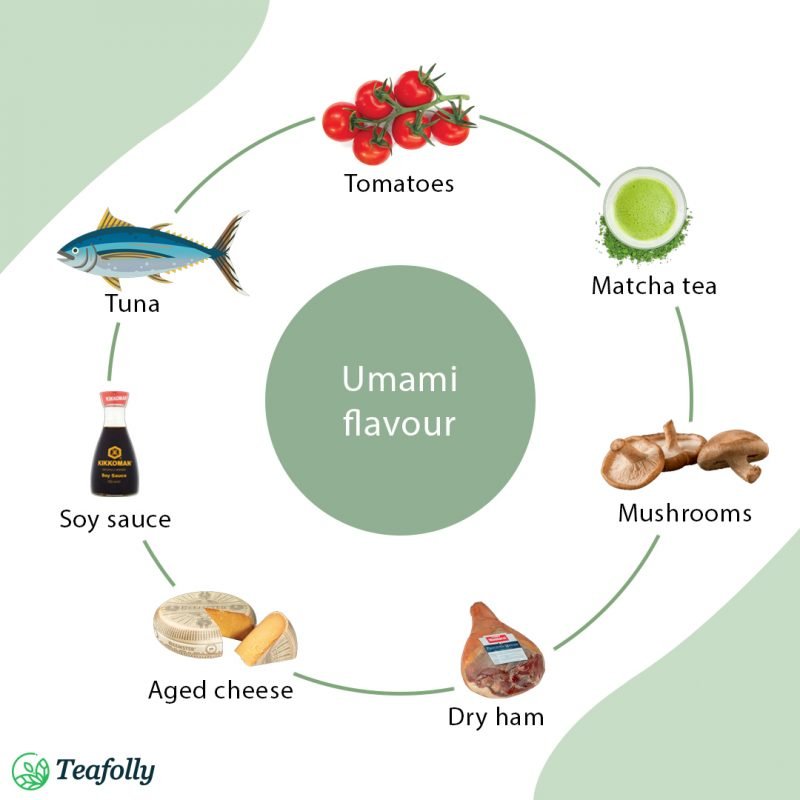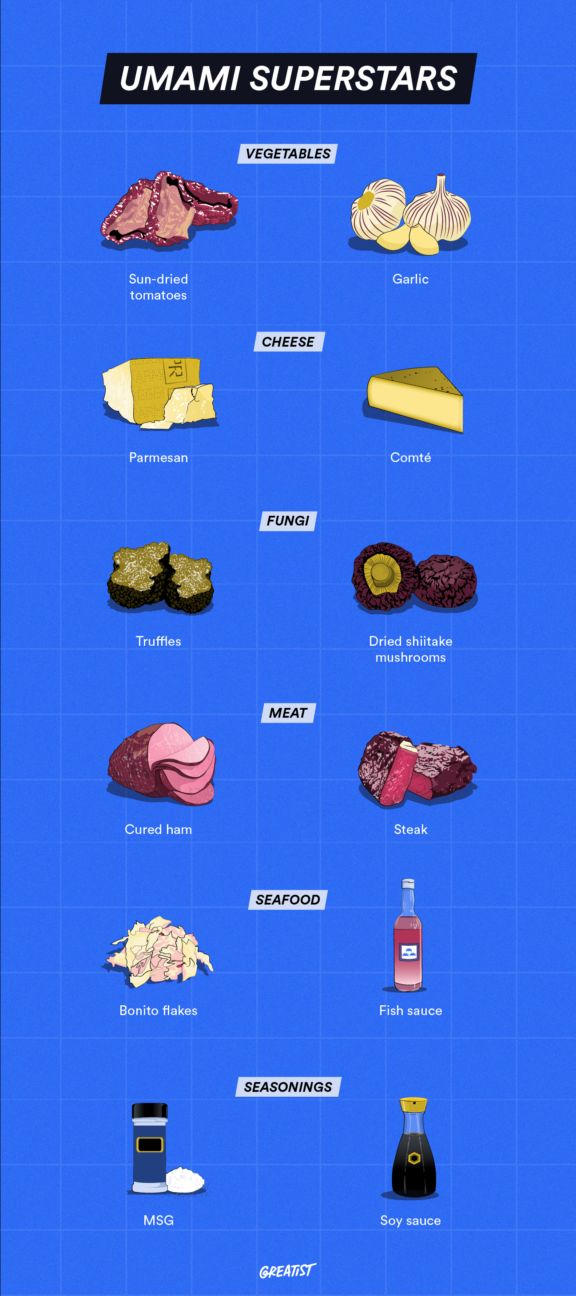Discover the mysterious fifth taste sensation of umami and uncover the delicious flavor secrets that will enhance your culinary creations.
Table of Contents
- Introduction: The Exciting World of Flavors
- Chapter 1: What Exactly is Umami?
- Chapter 2: The Discovery of Umami
- Chapter 3: Where Does Umami Come From?
- Chapter 4: How Umami Affects Our Tastes
- Making a Recipe Umami-Rich
- Cool Facts About Umami
- The Importance of Balance in Flavors
- Umami Around the World
- The Science of Umami
- Conclusion: Mastering Flavor Secrets
- FAQs: Curious Questions Answered
Introduction: The Exciting World of Flavors
Welcome to the wonderful world of flavors! Have you ever wondered what makes your favorite foods taste so delicious? Well, get ready for a culinary adventure as we delve into the fascinating realm of flavors and unlock a special secret that will leave your taste buds tingling with excitement. Today, we’re going to explore the magical taste of umami, a hidden gem in the world of flavors that adds a whole new dimension to the foods we love.
What is Flavor?
Flavors are like little treasures that make our food taste unique and enjoyable. They are the different tastes that we experience when we eat, like sweet, sour, salty, bitter, and the star of our adventure today – umami! Imagine each flavor as a special ingredient that comes together to create a symphony of taste in every dish you try.
Our Flavor Adventure
Get ready, young foodies! We’re about to embark on an exciting flavor journey to unravel the mystery of umami. This savory sensation is sure to surprise and delight your palate as we explore recipes, uncover flavor secrets, and dive into the world of flavors. So, put on your chef’s hat and let’s begin this flavorful expedition together!
Chapter 1: What Exactly is Umami?
Umami is a taste sensation that adds a whole new dimension to the world of flavors. It is like a secret ingredient that makes food taste extra delicious. Today, we are going to dive into the fascinating realm of umami and uncover its flavor secrets.
The Five Basic Tastes
Before we talk about umami, let’s quickly review the five basic tastes that our taste buds can detect. They are sweet, sour, bitter, salty, and finally, umami. Each taste plays a unique role in making food interesting and exciting. Now, let’s focus on umami, the one we’re here to explore further.
Umami Unveiled
Umami is often described as a savory or meaty taste. It can be found in foods like tomatoes, mushrooms, soy sauce, and cheeses. When you add ingredients rich in umami to a dish, it enhances the overall flavor and creates a crave-worthy taste that keeps you coming back for more. This special taste is what makes certain foods irresistible and adds depth to recipes. Isn’t it amazing how something as simple as umami can make such a big difference in how food tastes?
Chapter 2: The Discovery of Umami
Long, long ago, before the time of computers and smartphones, there was a magical journey that took place in the world of flavors. This journey led to the discovery of a secret taste called umami. Let’s dive into the exciting story of how umami was first found and delight your taste buds with this mysterious flavor. Get ready to uncover the hidden treasure of flavor secrets!

Image courtesy of www.dixiechikcooks.com via Google Images
Now, imagine a time when people were still figuring out what made food taste so delicious. Scientists knew about sweet, sour, salty, and bitter tastes, but there was something more to be uncovered. And that’s when a curious chef named Kikunae Ikeda decided to embark on a flavor adventure that would change the way we think about food forever.
Chapter 3: Where Does Umami Come From?
Umami, the mysterious and delicious fifth taste, can be found in various foods that we enjoy every day. Foods like tomatoes, mushrooms, soy sauce, and Parmesan cheese are packed with umami goodness. These ingredients add depth and richness to dishes, making them even more satisfying.
Exploring Umami in Recipes
When you’re cooking up a storm in the kitchen, you can easily add umami to your recipes to take them to the next level. Try adding a splash of soy sauce to your stir-fry or a sprinkle of Parmesan cheese on your pasta. These simple additions can enhance the flavors of your dish and make it even more delectable.
Chapter 4: How Umami Affects Our Tastes
Have you ever tried a dish that made your taste buds dance in delight? That’s the magic of flavors! Each taste gives food its unique deliciousness. But did you know there’s a hidden taste called umami that adds an extra special flavor to dishes? Let’s find out how umami changes the way we experience food.

Image courtesy of greatist.com via Google Images
The Power of Umami
Umami is like a secret potion that makes everything more savory and tasty. When you taste umami, it’s like uncovering a whole new level of deliciousness that you didn’t even know existed. This special taste can be found in foods like tomatoes, cheese, and soy sauce.
Transforming Ordinary into Extraordinary
Imagine biting into a juicy burger or slurping a bowl of noodles, and then suddenly experiencing a burst of rich, meaty flavor. That’s umami at work! It has the power to make simple foods taste extraordinary. So, next time you’re enjoying your favorite meal, think about how umami is making it even more delicious.
Making a Recipe Umami-Rich
Are you ready to embark on a culinary adventure in the world of flavors? You’ve learned about the secret taste of umami, and now it’s time to explore how to make your recipes burst with this savory goodness. Let’s dive into some tips and tricks to enhance the flavors of your dishes and tantalize your taste buds!
Simple Techniques to Enhance Flavors
Adding umami to your recipes doesn’t have to be complicated. One easy way to boost the savory taste is by using ingredients like soy sauce, miso paste, or Parmesan cheese. These umami-rich foods can elevate the flavors of your dishes without much effort.
Another simple trick is to slow-cook onions, garlic, or tomatoes to bring out their natural umami taste. By caramelizing these ingredients, you’ll deepen the flavor profile of your recipes and create a rich and satisfying dish.
Kitchen Experiments
Now, it’s time to put your newfound knowledge into practice. Try incorporating umami-rich ingredients into your favorite dishes and see how it transforms the taste. You might find that adding a sprinkle of Parmesan cheese to your pasta or a dash of soy sauce to your stir-fry enhances the overall flavor and makes your meal more delicious.
Experimenting with umami in the kitchen can be a fun and rewarding experience. Pay attention to how different ingredients change the taste of your dishes and discover new ways to make your recipes even more flavorful. Who knows, you might just uncover your secret recipe for creating umami-rich meals!
Cool Facts About Umami
Umami isn’t just a tasty flavor that makes our food delicious; it also has some interesting facts that might surprise you. Let’s explore some cool trivia about umami that will make you appreciate this special taste even more.

Image courtesy of www.pinterest.com via Google Images
The Origin of Umami
Did you know that the term “umami” comes from Japanese? It was first described by a Japanese scientist named Kikunae Ikeda in the early 20th century. He identified umami as a unique taste from glutamate, an amino acid found in foods like tomatoes, cheese, and mushrooms.
Umami and Savory Foods
Umami is often associated with savory foods because it enhances the overall taste and richness of a dish. Foods like Parmesan cheese, soy sauce, and miso soup are packed with umami, giving them a deeply satisfying flavor that keeps us coming back for more.
The Umami Tongue
Our taste buds have specific receptors for umami, allowing us to detect this savory taste separately from the others. These receptors are tuned to recognize glutamate and send signals to our brain, letting us know when we’re experiencing umami in our food.
Knowing these fun facts about umami can make your culinary adventures even more exciting as you explore recipes and flavors from around the world.
The Importance of Balance in Flavors
Have you ever tried a dish that was too salty, too sweet, or just didn’t quite taste right? Well, that’s where the importance of balance in flavors comes into play. When we talk about flavors, we’re not just talking about one taste. It’s like putting together a puzzle with different pieces – each flavor adds something special to the overall picture of how our food tastes.
| Umami | Flavor Secrets |
|---|---|
| Umami is one of the five basic tastes along with sweet, sour, bitter, and salty. It is often described as a savory or meaty taste. | Umami is created by the presence of glutamate, an amino acid found naturally in foods such as tomatoes, cheese, mushrooms, and soy sauce. |
| Umami enhances the overall flavor of a dish and can make it more satisfying and delicious. | Umami-rich foods can be used to add depth and complexity to dishes, creating a more well-rounded flavor profile. |
| Adding umami to your cooking can help you unlock new flavor combinations and elevate your culinary creations. | Experimenting with umami-rich ingredients like miso paste, fish sauce, and Parmesan cheese can take your dishes to the next level. |
Why Balance is Key
Imagine you’re at a party, and all your friends are playing different instruments. If one friend is playing the drums super loud, and another is strumming the guitar softly, it might not sound very pleasant. But if everyone plays at the right volume and in harmony, it creates a beautiful melody – just like how flavors work together in a dish.
Creating Delicious Harmony
Each flavor – sweet, salty, sour, bitter, and umami – brings its own unique note to the flavor symphony. Sweetness adds a touch of sugary goodness, saltiness brings out the savory side, sourness adds a tangy kick, bitterness balances the sweetness, and umami brings depth and richness to the dish.
Just like a chef in a kitchen, we can experiment with different ingredients to find the perfect balance of flavors in our meals. By adding a pinch of salt to offset the sweetness or a squeeze of lemon to brighten up the dish, we can create a symphony of tastes that dance on our taste buds.
So, next time you’re cooking or trying a new dish, pay attention to the balance of flavors. It’s like a secret recipe for making every meal a delicious masterpiece!
Umami Around the World
As we continue our culinary adventure exploring the world of flavors, let’s take a closer look at how umami is used in traditional dishes from different cultures around the globe. Umami, with its rich and savory taste, plays a vital role in enhancing the overall deliciousness of various cuisines.

Image courtesy of venngage.com via Google Images
Japanese Cuisine
In Japan, umami is deeply ingrained in the culinary culture. Ingredients like kombu (kelp), bonito flakes, soy sauce, and miso are frequently used to add that umami richness to dishes. From sushi to ramen, Japanese cuisine beautifully showcases how umami can elevate flavors.
Italian Cuisine
Italian cuisine also embraces the essence of umami through ingredients like tomatoes, Parmesan cheese, mushrooms, and cured meats. Traditional dishes such as pasta with Parmesan cheese or risotto with mushrooms highlight the importance of umami in Italian cooking.
Chinese Cuisine
Chinese cuisine takes umami to another level with ingredients like oyster sauce, fermented black beans, and various types of mushrooms. Dishes like Mapo Tofu and Peking Duck exemplify the Chinese skill in utilizing umami to create bold and unforgettable flavors.
Mexican Cuisine
Mexican cuisine blends umami with spicy and tangy flavors to create mouthwatering dishes. Ingredients like tomatoes, chilies, avocado, and beans contribute to the savory richness of dishes like mole sauce, pozole, and guacamole.
Exploring how different cultures incorporate umami in their traditional dishes opens up a world of exciting flavors and culinary experiences. From umami-packed sushi in Japan to savory pasta dishes in Italy, the use of umami enhances the depth and complexity of flavors, making each culture’s cuisine unique and delicious.
The Science of Umami
Umami is not just any ordinary taste; it has a scientific explanation behind its deliciousness. When we eat foods rich in umami, our taste buds react to a special compound called glutamate. This compound is what gives umami its savory, mouthwatering flavor.
How Our Tongues Taste Umami
Our taste buds have tiny receptors that can detect different flavors like sweet, salty, sour, bitter, and of course, umami. When we eat foods with umami, these receptors send signals to our brain, telling us that the food is savory and delicious.
Umami’s Role in Food Enjoyment
Umami is like a secret ingredient that enhances the overall taste of foods. It adds depth and richness to dishes, making them more satisfying and flavorful. That’s why many chefs love to incorporate umami-rich ingredients in their recipes.
Conclusion: Mastering Flavor Secrets
Throughout our culinary adventure into the world of flavors, we’ve uncovered an exciting and mysterious taste sensation known as umami. Just like sweet, salty, sour, and bitter, umami adds a whole new dimension to how we experience the deliciousness of food.

Image courtesy of www.teafolly.com via Google Images
What Have We Discovered?
In our exploration of umami, we’ve learned that this savory taste can be found in a variety of foods, from meats and cheeses to tomatoes and mushrooms. Umami has the power to enhance the flavors in dishes, making them richer and more satisfying to our taste buds.
Become a Flavor Detective
As you continue on your flavor journey, remember to pay attention to the umami-rich foods you eat. Try adding a little umami boost to your favorite recipes to see how it can elevate the taste to a whole new level. Become a flavor detective in your own kitchen and discover the magic of umami for yourself!
FAQs: Curious Questions Answered
What makes umami different from other flavors?
Umami is a unique flavor that is often described as savory, rich, and meaty. While sweet, salty, sour, and bitter are the other basic tastes we know, umami adds a depth and complexity to food that makes it truly special. When you taste umami, it’s like unlocking a secret ingredient that makes everything taste even better!
Where did the term “umami” come from?
The term “umami” actually comes from Japanese, where it translates to “pleasant savory taste.” This delicious taste was identified by a Japanese scientist named Kikunae Ikeda in the early 20th century, who realized there was a special flavor aside from the basic tastes we previously knew. Thanks to his discovery, we now have umami to enjoy in our meals!
Can kids enjoy umami-rich foods too?
Absolutely! Kids can have fun exploring umami in their favorite dishes just like adults. Umami can be found in familiar foods like tomatoes, cheese, mushrooms, and even ketchup. By adding umami-rich ingredients to recipes, kids can create delicious meals that burst with flavor and make every bite exciting!
How can I make my meals more umami-rich?
Making your meals more umami-rich is easy and fun! Try adding ingredients like soy sauce, Parmesan cheese, miso paste, or even a dash of Worcestershire sauce to your dishes. These simple additions can enhance the flavor profile of your meal and take it to the next level. Don’t be afraid to experiment in the kitchen and discover new umami-packed recipes!





